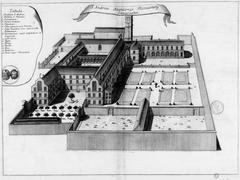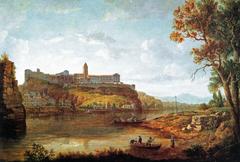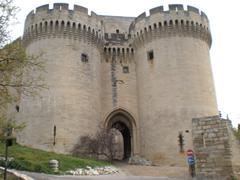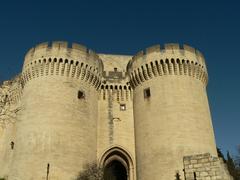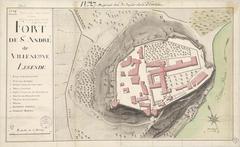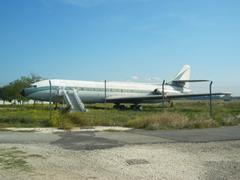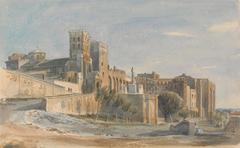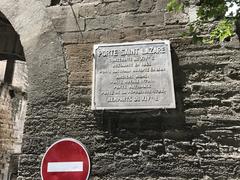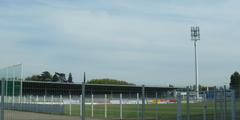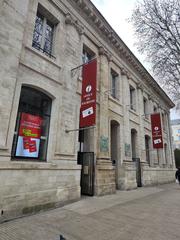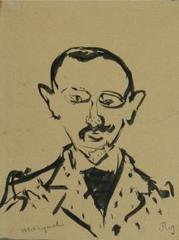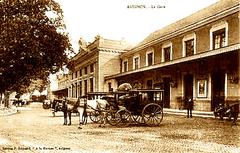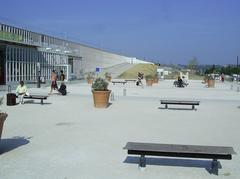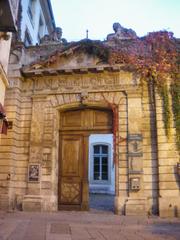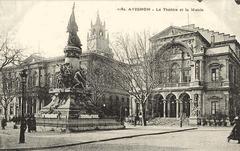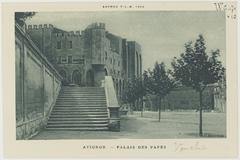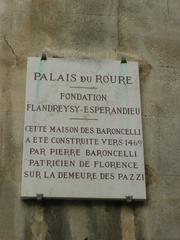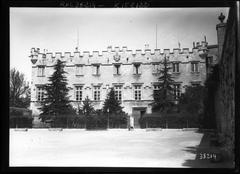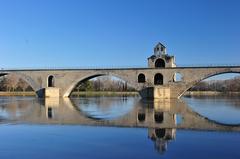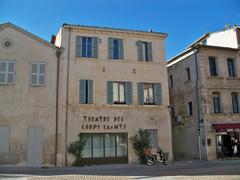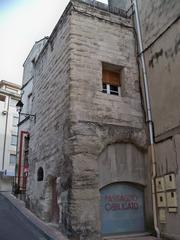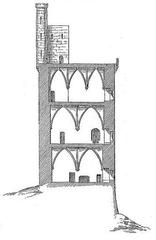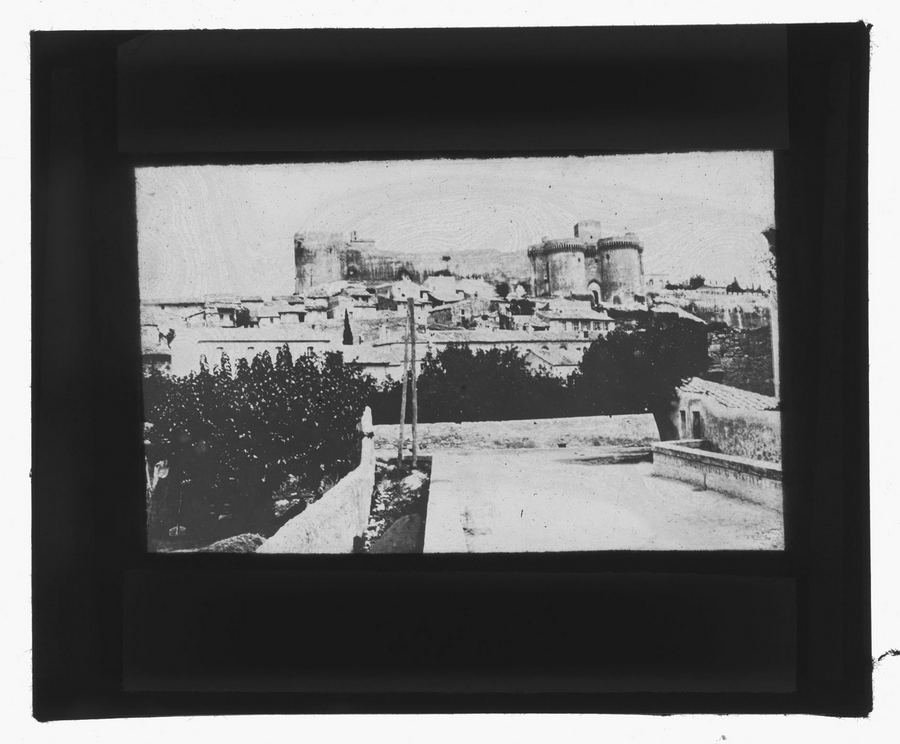
Comprehensive Guide to Visiting Rue Montée du Fort in Avignon, France
Date: 19/07/2024
Introduction
Nestled in the heart of Avignon, France, Rue Montée du Fort is more than just a cobblestone pathway leading to the majestic Palais des Papes. This historic street serves as a living testament to Avignon’s rich past, intertwining ancient beginnings, papal influence, and vibrant contemporary culture. The significance of Rue Montée du Fort is rooted deep within the city’s history, dating back to the Neolithic period, and has seen the rise and fall of empires and religious powers (Discover the History of Rue Montée du Fort).
As visitors ascend this steep, picturesque incline, they are not just walking on stones but treading the same path once traversed by Roman citizens, medieval pilgrims, and papal processions. The 14th-century Avignon Papacy marked a transformative era for the street, turning it into a bustling artery of religious and political activity (Exploring Rue Montée du Fort). Today, Rue Montée du Fort continues to be a vital link within Avignon, connecting history enthusiasts and travelers to the city’s multifaceted past and present.
This comprehensive guide delves into the history, cultural significance, and practical visitor information of Rue Montée du Fort. From the monumental Palais des Papes to the serene Rocher des Doms, every step along this iconic street offers a glimpse into Avignon’s layered historical tapestry. Whether you are a history buff, art lover, or curious traveler, this guide will help you uncover the many stories that Rue Montée du Fort has to tell and make the most of your visit to Avignon.
Table of Contents
- Introduction
- History of Rue Montée du Fort
- Visitor Information
- Key Attractions and Points of Interest
- Cultural Significance
- Travel Tips and Accessibility
- Nearby Attractions
- Conclusion
- FAQ
History of Rue Montée du Fort
From Ancient Beginnings to Papal Power
The history of Rue Montée du Fort is deeply intertwined with that of Avignon itself. Long before the street’s cobblestones echoed with the footsteps of pilgrims and papal processions, the area was inhabited by ancient settlements. Archaeological evidence suggests human presence dating back to the Neolithic period, with more substantial remains from the Gallo-Roman era.
During the Roman period, Avignon, known as Avenio, flourished as a strategic settlement along the Rhône River. While the exact path of Rue Montée du Fort during this time is uncertain, it likely served as an important route leading up to the Rocher des Doms, the rocky plateau where the Palais des Papes stands today. This natural elevation provided defensive advantages and panoramic views, making it a desirable location for settlements throughout history.
The Avignon Papacy - A Defining Era
The 14th century marked a turning point for both Avignon and Rue Montée du Fort. In 1309, under pressure from the French monarchy, Pope Clement V moved the papacy from Rome to Avignon. This pivotal event, known as the Avignon Papacy, transformed the city into a center of religious and political power.
The arrival of the papacy spurred significant construction and expansion in Avignon. The Palais des Papes, a monumental palace fortress, became the papal residence and a symbol of the church’s authority. Rue Montée du Fort, leading directly to the palace entrance, became a vital artery within the newly fortified city.
A Street of Pilgrimage and Power
During the Avignon Papacy (1309-1376), Rue Montée du Fort witnessed a constant flow of pilgrims, ambassadors, and dignitaries from across Europe. Drawn by the presence of the papacy, they traversed the steep incline, seeking audiences, blessings, and perhaps a glimpse of the pontiff himself.
The street’s strategic importance also made it a hub of activity. Military processions, religious ceremonies, and even theatrical performances are known to have taken place along Rue Montée du Fort, showcasing the vibrant cultural tapestry of Avignon during this period.
Beyond the Papacy - A Legacy Endures
The departure of the papacy from Avignon in 1376 did not diminish the historical significance of Rue Montée du Fort. The street continued to be a vital link within the city, evolving alongside Avignon through centuries marked by changing political landscapes and cultural shifts.
While the street’s appearance has undoubtedly transformed over time, with buildings renovated and modernized, the essence of its historical significance remains palpable. Walking along Rue Montée du Fort today offers a tangible connection to Avignon’s layered past, allowing visitors to retrace the steps of pilgrims, imagine the grandeur of papal processions, and appreciate the enduring legacy of a street that bore witness to a pivotal chapter in European history.
Visitor Information
- Visiting Hours: The street is accessible 24/7, but it’s best to visit during daylight hours to fully appreciate its historical context and scenic views.
- Tickets: No tickets are required to walk the street itself. However, tickets are required for entry to the Palais des Papes and can be purchased at the entrance or online.
Travel Tips
- Footwear: Wear comfortable walking shoes as the incline can be steep and the cobblestones uneven.
- Photography: Best photographic spots include the top of the street near the entrance to the Palais des Papes and points along the ascent that offer views of Avignon.
- Accessibility: The street may be challenging for those with mobility issues due to its steep incline and cobblestone surface.
Key Attractions and Points of Interest
Palais des Papes (Palace of the Popes)
Towering over Rue Montée du Fort, the Palais des Papes (Palais des Papes) is the star attraction. This UNESCO World Heritage site is a masterpiece of Gothic architecture and the largest Gothic palace in the world. Built in the 14th century, it served as the seat of Western Christianity during the Avignon Papacy.
Highlights
- Grand Tinel: This immense hall hosted lavish banquets and papal audiences.
- Consistory: The Pope’s private chapel, adorned with stunning frescoes.
- Palais Vieux (Old Palace): The original palace structure, showcasing austere architectural elements.
- Panoramic Views: Ascend the palace towers for breathtaking views of Avignon, the Rhône River, and the surrounding countryside.
Visitor Information
- Tickets: Book your tickets online to avoid long queues. Prices vary; check the website for the latest rates.
- Visiting Hours: Open daily from 9:00 AM to 7:00 PM. Hours may vary seasonally, so check the website for updates.
- Tips:
- Book tickets online to avoid long queues, especially during peak season.
- Allow ample time to explore the vast complex, ideally 2-3 hours.
- Consider an audio guide or guided tour to enhance your understanding of the palace’s history and significance.
Rocher des Doms (Doms Rock)
Adjacent to the Palais des Papes, the Rocher des Doms (Rocher des Doms) offers a welcome respite from the bustling streets below. This elevated park provides stunning panoramic views of Avignon, the Rhône River, and the Saint-Bénezet Bridge.
Highlights
- Panoramic Views: Capture breathtaking photos of Avignon’s iconic landmarks.
- Tranquil Gardens: Stroll through the serene gardens, adorned with fountains, sculptures, and lush greenery.
- Grotte de la Vierge: Discover this artificial cave dedicated to the Virgin Mary.
Visitor Information
- Opening Hours: Open daily from 7:30 AM to 8:30 PM.
- Tips:
- Visit early morning or late afternoon for softer light and fewer crowds.
- Pack a picnic and enjoy a leisurely lunch amidst the picturesque surroundings.
Petit Palais Museum
Located at the foot of Rocher des Doms, the Petit Palais Museum (Petit Palais Museum) houses an exceptional collection of Italian and Provençal paintings from the 13th to the 16th centuries.
Highlights
- Italian Primitives: Admire works by renowned artists such as Botticelli and Bellini.
- Avignon School: Discover the unique style of painting that flourished in Avignon during the 15th century.
- Sculptures and Decorative Arts: Explore a diverse collection of sculptures, tapestries, and other decorative objects.
Visitor Information
- Tickets: Free admission.
- Visiting Hours: Open daily except Tuesdays, from 10:00 AM to 1:00 PM and 2:00 PM to 6:00 PM.
- Tips:
- Allow 1-2 hours to fully appreciate the museum’s collection.
- Check the museum’s website for temporary exhibitions and events.
Rue des Teinturiers
A short walk from Rue Montée du Fort, Rue des Teinturiers (Rue des Teinturiers) offers a glimpse into Avignon’s industrial past. This charming street derives its name from the numerous textile dyeing workshops that once lined its banks.
Highlights
- Water Wheels: Witness the still-functioning water wheels, a testament to the street’s historical significance.
- Artisan Shops: Browse unique boutiques and workshops showcasing local crafts and products.
- Picturesque Canal: Stroll along the canal, shaded by plane trees, and soak in the tranquil ambiance.
Visitor Information
- Tips:
- Combine your visit with a walk along the nearby ramparts for a comprehensive historical experience.
- Enjoy a meal at one of the charming restaurants along the canal.
Collection Lambert
For contemporary art enthusiasts, the Collection Lambert (Collection Lambert) is a must-visit. Housed in a beautifully restored 18th-century mansion, this museum showcases a private collection of modern and contemporary art.
Highlights
- Internationally Renowned Artists: Discover works by prominent artists such as Cy Twombly, Anselm Kiefer, and Sol LeWitt.
- Rotating Exhibitions: Explore a diverse range of contemporary art through temporary exhibitions.
- Peaceful Courtyard: Take a break in the tranquil courtyard, a hidden gem in the heart of Avignon.
Visitor Information
- Tickets: General admission is €10, with discounts available for students and seniors.
- Visiting Hours: Open daily except Mondays, from 11:00 AM to 6:00 PM.
- Tips:
- Check the museum’s website for current exhibitions and opening hours.
- Allow 1-2 hours to fully appreciate the collection.
Place de l’Horloge
No visit to Avignon is complete without experiencing the lively atmosphere of Place de l’Horloge (Place de l’Horloge). This central square is the heart of the city, bustling with cafes, restaurants, and shops.
Highlights
- Hôtel de Ville (City Hall): Admire the elegant 19th-century building, home to the city’s administration.
- Opera House: Catch a performance at the beautiful opera house, dating back to the 19th century.
- People-Watching: Relax at one of the many cafes and soak in the vibrant ambiance of this bustling square.
Visitor Information
- Tips:
- Visit in the evening when the square comes alive with street performers and musicians.
- Enjoy a traditional Provençal meal at one of the many restaurants.
Les Halles Market
For a taste of local life, head to Les Halles Market (Les Halles Market), a covered market brimming with fresh produce, regional specialties, and local delicacies.
Highlights
- Fresh Produce: Sample seasonal fruits, vegetables, and herbs from local producers.
- Regional Specialties: Discover Provençal delicacies such as tapenade, olive oil, and honey.
- Local Cheeses and Wines: Indulge in a selection of locally produced cheeses and wines.
Visitor Information
- Opening Hours: Open daily from 6:00 AM to 1:30 PM.
- Tips:
- Visit early in the morning for the best selection and to experience the market at its liveliest.
- Bring cash as not all vendors accept credit cards.
Cultural Significance
A Tapestry of Time
The very stones beneath your feet on Rue Montée du Fort speak of centuries past. This street, once a vital artery within the fortified city, has witnessed the ebb and flow of civilizations. As you ascend towards the imposing Palais des Papes, imagine the footsteps of pilgrims, merchants, and even popes who once traversed this same path. The architecture reflects a blend of medieval and Renaissance influences, a testament to Avignon’s evolving cultural landscape.
Artistic Heartbeat
Rue Montée du Fort beats with the rhythm of creativity. The street is a haven for artists and artisans, their workshops and galleries overflowing with unique creations. Step into these intimate spaces and discover the works of local painters, sculptors, ceramicists, and more. Engage with the artists, learn about their craft, and perhaps even take home a piece of Avignon’s artistic soul.
Festivals - A Celebration of Heritage
Avignon’s cultural calendar bursts with festivals, and Rue Montée du Fort becomes a stage for these vibrant celebrations. During the renowned Festival d’Avignon in July, the street thrums with the energy of street performers, musicians, and theater enthusiasts. The atmosphere is electric, a testament to the city’s enduring passion for the arts.
Gastronomic Delights
No exploration of Rue Montée du Fort is complete without indulging in the local gastronomy. The street is peppered with charming restaurants and cafes, each offering a taste of Provence. Savor traditional dishes like Daube Provençale (beef stew) or Aïoli (garlic mayonnaise), accompanied by a glass of local Côtes du Rhône wine. Don’t miss the opportunity to sample freshly baked bread from a local boulangerie – the aroma alone is a sensory delight.
Local Insights - Beyond the Tourist Trail
To truly experience the cultural richness of Rue Montée du Fort, venture beyond the well-trodden tourist path. Engage with the locals – the shopkeepers, artisans, and residents who bring the street to life. Strike up a conversation, even if it’s just a friendly “Bonjour.” Their insights and stories will offer a glimpse into the authentic heart of Avignon.
Here are some tips for connecting with the local culture:
- Learn a few basic French phrases. Even a simple “Bonjour” or “Merci” goes a long way in showing respect and fostering connection.
- Visit local markets. The markets of Avignon are a feast for the senses and a great place to interact with local producers and vendors.
- Attend a cultural event. From concerts to theater performances, Avignon offers a diverse range of cultural experiences that provide insights into the local scene.
- Be respectful of local customs. Observe how locals interact with each other and follow their lead.
Travel Tips and Accessibility
Rue Montée du Fort is easily accessible on foot from the center of Avignon. Wear comfortable walking shoes as the street is steep and cobblestoned. For those needing assistance, some guided tours offer accessibility options. Check with local tour providers for more details.
Nearby Attractions
In addition to the Palais des Papes, don’t miss nearby attractions such as the Pont Saint-Bénézet and the Avignon Cathedral. These sites offer further insights into the historical and cultural tapestry of Avignon.
Conclusion
Rue Montée du Fort is more than just a historic street; it is a journey through time that encapsulates the essence of Avignon’s rich cultural and historical heritage. As you explore this steep cobblestone path, you are following in the footsteps of ancient settlers, Roman citizens, and medieval pilgrims, each layer of history adding to the street’s profound significance (Discover the History of Rue Montée du Fort).
The street’s importance is not limited to its past. Today, Rue Montée du Fort is a vibrant hub of contemporary life, where history and modernity coexist harmoniously. From the grand halls of the Palais des Papes to the tranquil gardens of Rocher des Doms, and from the intimate artisan workshops to the bustling cafes, every corner of Rue Montée du Fort offers something unique and memorable (Exploring Rue Montée du Fort).
By visiting Rue Montée du Fort, you are not just witnessing history but also becoming a part of it. Engage with the local culture, savor the gastronomic delights, and immerse yourself in the artistic and festive spirit of Avignon. This guide aims to provide you with all the necessary information to make your visit to Rue Montée du Fort an enriching and unforgettable experience.
For the latest updates and more travel tips, don’t forget to download the Audiala mobile app, check out related posts, or follow us on social media. Rue Montée du Fort awaits your discovery, promising a journey that bridges the past and present in the heart of Avignon.
FAQ
- What are the visiting hours for Rue Montée du Fort? The street is accessible 24/7.
- Do I need tickets to visit Rue Montée du Fort? No tickets are required for the street, but you need tickets for the Palais des Papes.
- Is Rue Montée du Fort accessible for those with mobility issues? The steep incline and cobblestone surface may be challenging.
References
- Discover the History of Rue Montée du Fort - Avignon’s Iconic Pathway to the Palais des Papes, 2024, Author source url
- Exploring Rue Montée du Fort - A Guide to Palais des Papes Tickets, Visiting Hours, and Avignon’s Historical Sites, 2024, Author source url
- Exploring Rue Montée du Fort in Avignon - Cultural Significance, Visiting Hours, and Local Insights, 2024, Author source url

